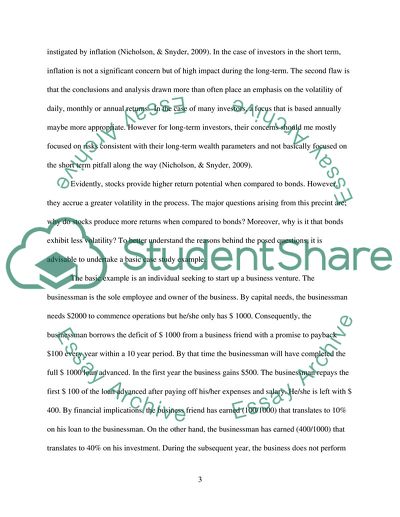Cite this document
(“Stock Vs. Bonds Essay Example | Topics and Well Written Essays - 1500 words”, n.d.)
Stock Vs. Bonds Essay Example | Topics and Well Written Essays - 1500 words. Retrieved from https://studentshare.org/macro-microeconomics/1637249-stocks-have-historically-had-much-higher-returns-than-bonds-can-these-excess-returns-be-justified-by-the-higher-risk-attached-to-stocks-or-are-there-alternative-expla-nations
Stock Vs. Bonds Essay Example | Topics and Well Written Essays - 1500 words. Retrieved from https://studentshare.org/macro-microeconomics/1637249-stocks-have-historically-had-much-higher-returns-than-bonds-can-these-excess-returns-be-justified-by-the-higher-risk-attached-to-stocks-or-are-there-alternative-expla-nations
(Stock Vs. Bonds Essay Example | Topics and Well Written Essays - 1500 Words)
Stock Vs. Bonds Essay Example | Topics and Well Written Essays - 1500 Words. https://studentshare.org/macro-microeconomics/1637249-stocks-have-historically-had-much-higher-returns-than-bonds-can-these-excess-returns-be-justified-by-the-higher-risk-attached-to-stocks-or-are-there-alternative-expla-nations.
Stock Vs. Bonds Essay Example | Topics and Well Written Essays - 1500 Words. https://studentshare.org/macro-microeconomics/1637249-stocks-have-historically-had-much-higher-returns-than-bonds-can-these-excess-returns-be-justified-by-the-higher-risk-attached-to-stocks-or-are-there-alternative-expla-nations.
“Stock Vs. Bonds Essay Example | Topics and Well Written Essays - 1500 Words”, n.d. https://studentshare.org/macro-microeconomics/1637249-stocks-have-historically-had-much-higher-returns-than-bonds-can-these-excess-returns-be-justified-by-the-higher-risk-attached-to-stocks-or-are-there-alternative-expla-nations.


